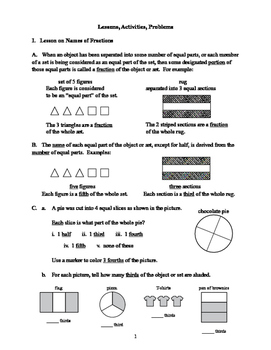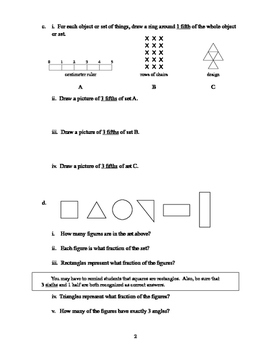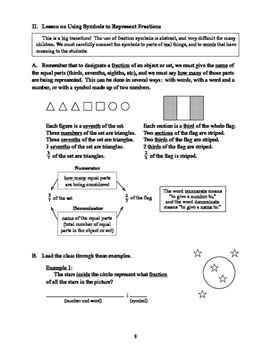Getting to the CORE of Fractions - Teacher Guide
Cat McKay
0 Followers
Grade Levels
4th - 6th, Homeschool
Subjects
Resource Type
Standards
CCSS4.NF.A.1
CCSS4.NF.A.2
CCSS4.NF.B.3
CCSS4.NF.B.3a
CCSS4.NF.B.3b
Formats Included
- PDF
Pages
103 pages
Cat McKay
0 Followers
Description
Getting to the Core of Fractions is a carefully sequenced set of lessons and problems which develop all the essential concepts and processes of fractions through about the fifth grade. Everything begins with familiar language and real situations, and gradually progresses to mathematical terms and symbols. Each lesson of problems builds on what students have already learned. (For example, the lesson on decimals begins with examples that show how decimals are simply an extension and connection of place value, fractions, and our representation of money!)
These materials are intended to be part of a challenging 4th grade curriculum, or as reinforcement for 5th or 6th graders who need it.
The Teaching Guide for the module includes 9 major lessons, 95 multi-part problems and activities, 10 sample tests, and a complete Answer Key—all important, fundamental mathematics that all students need to learn regardless of what standards or curricula they are following. Quite a bargain!
These materials are intended to be part of a challenging 4th grade curriculum, or as reinforcement for 5th or 6th graders who need it.
The Teaching Guide for the module includes 9 major lessons, 95 multi-part problems and activities, 10 sample tests, and a complete Answer Key—all important, fundamental mathematics that all students need to learn regardless of what standards or curricula they are following. Quite a bargain!
Total Pages
103 pages
Answer Key
Included
Teaching Duration
1 Year
Report this resource to TPT
Reported resources will be reviewed by our team. Report this resource to let us know if this resource violates TPT’s content guidelines.
Standards
to see state-specific standards (only available in the US).
CCSS4.NF.A.1
Explain why a fraction 𝘢/𝘣 is equivalent to a fraction (𝘯 × 𝘢)/(𝘯 × 𝘣) by using visual fraction models, with attention to how the number and size of the parts differ even though the two fractions themselves are the same size. Use this principle to recognize and generate equivalent fractions.
CCSS4.NF.A.2
Compare two fractions with different numerators and different denominators, e.g., by creating common denominators or numerators, or by comparing to a benchmark fraction such as 1/2. Recognize that comparisons are valid only when the two fractions refer to the same whole. Record the results of comparisons with symbols >, =, or <, and justify the conclusions, e.g., by using a visual fraction model.
CCSS4.NF.B.3
Understand a fraction 𝘢/𝘣 with 𝘢 > 1 as a sum of fractions 1/𝘣.
CCSS4.NF.B.3a
Understand addition and subtraction of fractions as joining and separating parts referring to the same whole.
CCSS4.NF.B.3b
Decompose a fraction into a sum of fractions with the same denominator in more than one way, recording each decomposition by an equation. Justify decompositions, e.g., by using a visual fraction model. Examples: 3/8 = 1/8 + 1/8 + 1/8; 3/8 = 1/8 + 2/8; 2 1/8 = 1 + 1 + 1/8 = 8/8 + 8/8 + 1/8.





